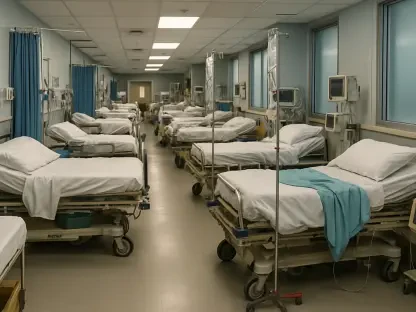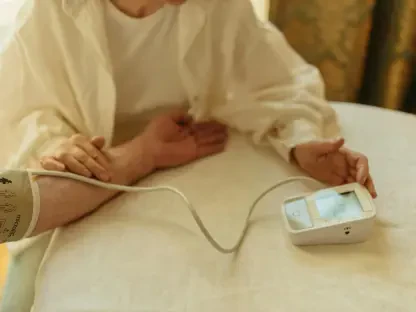Emergency departments (EDs) form the frontline of healthcare services, often facing overwhelming patient demands and the constant pressure to provide timely, high-quality care. The COVID-19 pandemic significantly exacerbated these challenges, drawing attention to the urgent need for innovative solutions in managing patient flow and ensuring safety. This article delves into Professor Robyn Clay-Williams’ research initiatives in New South Wales (NSW), focusing on the application of cognitive work analysis (CWA) to address these pressing issues.
Challenges in Emergency Departments
Emergency departments continually face the challenge of demand management amid an often overwhelming influx of patients. The COVID-19 pandemic brought these issues to the forefront, amplifying pre-existing strains within healthcare infrastructures. EDs are inherently complex and dynamic environments where healthcare professionals must rapidly make life-saving decisions. This complexity makes it incredibly difficult to introduce and analyze new interventions in a way that does not disrupt real-world operations yet provides clear, actionable insights.Working under stressful and rapidly changing conditions, healthcare providers need an adaptive system that can seamlessly integrate with existing workflows while offering tangible improvements in operational efficiency. Traditional methodologies often fall short in addressing the nuances and complexities of EDs, necessitating the exploration of innovative approaches that can better meet these demands. This underscores the importance of pioneering research like that led by Professor Robyn Clay-Williams, who has sought to fill this void through the application of cognitive work analysis.
Introduction to Cognitive Work Analysis
Cognitive Work Analysis (CWA) is a methodological framework designed to understand complex work environments and to design interventions that enhance performance and safety. Originally designed for use in industrial and military settings, CWA has demonstrated significant potential within healthcare, particularly in the intricate and high-stakes realm of emergency departments. This approach allows researchers to model detailed and multifaceted aspects of ED operations, making it possible to simulate and evaluate various scenarios without disrupting actual practice.Professor Robyn Clay-Williams and her team have applied CWA to create detailed models of the EDs at Blacktown and Mount Druitt Hospitals, part of the Western Sydney Local Health District. These models help identify bottlenecks, analyze workflows, and suggest context-specific improvements. By simulating different interventions, the models enable the prediction of outcomes, ensuring any suggested changes are both feasible and beneficial. This data-driven approach is crucial in a setting where patient safety and operational efficiency are paramount.
Outcomes of the Research Initiative
The outcomes of Professor Clay-Williams’ research are both extensive and impactful, culminating in the development of robust CWA models that have been validated for broader application across NSW’s emergency departments. These models are not abstract constructs but practical tools actively used to test and implement interventions aimed at enhancing patient experience and ED performance. One significant area of focus has been the care pathway for mental health patients at Blacktown Hospital’s ED. By tailoring the CWA models to address these specific needs, significant improvements in patient outcomes and operational efficiency have been reported.The feedback from the interventions tested using these models has been promising, revealing enhanced patient care processes and a more efficient allocation of resources within the EDs. The real-world applicability of these models highlights the versatility and effectiveness of CWA in addressing complex healthcare challenges. This success serves as a testament to the method’s ability to bridge the gap between theoretical research and practical implementation, driving meaningful improvements in emergency department operations.
Academic and Professional Growth
The NSW Health Early-Mid Career Research Fellowship played a pivotal role in Professor Clay-Williams’ journey, providing not only financial support but also a platform for significant academic and professional growth. This fellowship enabled her to delve deeply into CWA, a technique relatively new to the healthcare sector, and apply it effectively in the challenging environment of emergency departments. The fellowship’s support was instrumental in her research and her academic career progression, allowing her to produce 26 peer-reviewed publications, including 14 as the primary author. This body of work has garnered over 320 citations, added seven book chapters to her name, and led to 49 presentations.The impact of the fellowship on her career is evident in her subsequent promotions, moving from Lecturer and Research Fellow to Senior Research Fellow and, eventually, to becoming a professor. This trajectory underscores the profound influence structured research support can have on an individual’s academic and professional development. The fellowship facilitated a deeper exploration into innovative methodologies like CWA, enabling significant contributions to healthcare research and practice.
Collaborative Efforts and Secured Funding
The success of Professor Clay-Williams’ research underscores the importance of collaboration in healthcare research. By working closely with local health districts, the Emergency Care Institute, and ED management at local hospitals, her team was able to secure additional funding and support for their projects. These partnerships laid the groundwork for securing a substantial $2.8 million Medical Research Future Fund grant. Interdisciplinary and collaborative approaches enrich the research process, ensuring that the interventions developed are theoretically sound and practically viable.Such collaborations facilitate the exchange of knowledge and resources, enhancing the implementation of findings and leading to more effective and sustainable solutions. The collaborative approach taken by Professor Clay-Williams and her team demonstrates how pooling expertise and resources can drive significant advancements in healthcare. Their work not only serves the immediate needs of the hospitals involved but also contributes to the broader body of knowledge that can benefit healthcare systems worldwide.
Empowering Healthcare Systems Globally
Emergency departments (EDs) are the frontline of healthcare, constantly confronted with overwhelming patient demands and the pressure to provide efficient, high-quality care. The COVID-19 pandemic significantly worsened these challenges, highlighting the urgent need for innovative solutions to manage patient flow and ensure safety. This exploration focuses on Professor Robyn Clay-Williams’ research in New South Wales (NSW), particularly using cognitive work analysis (CWA) to address these critical issues.Globally, EDs struggle with chronic demand management problems, balancing a high influx of patients with limited resources. The COVID-19 pandemic exacerbated these challenges, resulting in unprecedented patient volumes and strained healthcare systems. EDs are inherently complex and dynamic, with many variables that complicate the implementation and analysis of new interventions. Healthcare professionals in EDs must make swift and informed decisions, often under high stress. This environment demands a flexible system that can adapt to rapid changes and unforeseen scenarios. The main challenge is developing methodologies that enhance operational efficiency without disrupting day-to-day functions in these vital units.









